PERU
Math and Mystery of the Inca
By Marisa Laks
New York, NY, United States
The earliest records of the Inca in South America date back to the 12th century. Over the next 300 years, the Inca of Cuzco, Peru, expanded their empire by conquering nearby communities. In the century before the Spanish Conquest, the Inca Empire spanned South America from Chile to Colombia.
Knot for Everyone
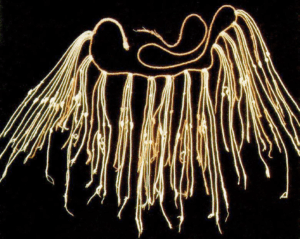 The Inca kept records using a mathematical system of knots called a quipu. Using a base 10 system, they knotted strings to represent place values, similar to the numbers we use today. Strings of contrasting colors represented the objects being counted. Wherever a quipu went, a trained expert followed, in order to translate its information and maintain its accuracy.
The Inca kept records using a mathematical system of knots called a quipu. Using a base 10 system, they knotted strings to represent place values, similar to the numbers we use today. Strings of contrasting colors represented the objects being counted. Wherever a quipu went, a trained expert followed, in order to translate its information and maintain its accuracy.
In addition to the quipu, the Inca used a counting board, similar to an abacus, called a yupana. Sometimes a yupana could be as big as a table. Unfortunately, there is not as much information about how to use this tool.
Amazing Architecture
The Inca were expert architects and engineers even without the use of wheels, draft animals, or iron tools. In a short period of time, the Inca created a sophisticated network of roads and structures. Many of these structures are still perfectly intact today.
Ancient Inca construction was so precise that stone buildings were built without the use of mortar. It is said that their stones fit together so perfectly that a knife blade could not fit between them. This expert interlocking arrangement provided enough flexibility that during earthquakes the walls were able to wobble. Once the tremors ended, the stones settled back into place. Reports abound in Peru of earthquakes leveling modern buildings while centuries-old Incan walls stayed intact.
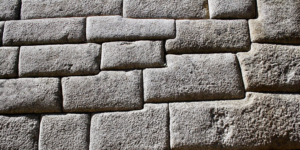
Perhaps the most impressive structures can be found at the renowned Machu Picchu. Stretching over five miles, this mountain fortress was built during the 15th century, most likely as a retreat for the emperor and his family as well as other aristocrats. The lack of evidence of fighting suggests that it had no military purpose. Over 3,000 stone steps connect the various levels and buildings.
It was then abandoned sometime around the Spanish conquest of the 1530s. Although nobody knows for certain, a smallpox epidemic might have wiped out the residents. Archaeologists are convinced that invading conquistadors did not find Machu Picchu.
From Every Angle
If you visit this site, you’ll see many geometric features. For example, there are parallel terraces built into the side of the mountain that were used for farming and architectural support. Many of the windows and doorways are trapezoids for greater stability. The Temple of the Sun is an elliptical shape whose windows align with the sun during the summer solstice.
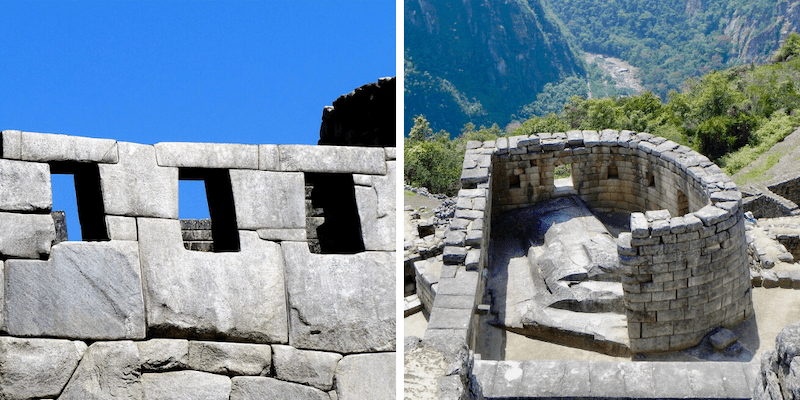
Geometric features are also found in many other Inca sites, such as Ollantaytambo and Sacsayhuamán. Although the Inca Empire was only around for a short amount of time, it left a lasting legacy that still intrigues and amazes people today!
Have a suggestion for this story? We’d love for you to submit it!
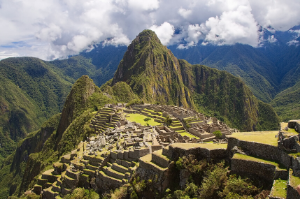
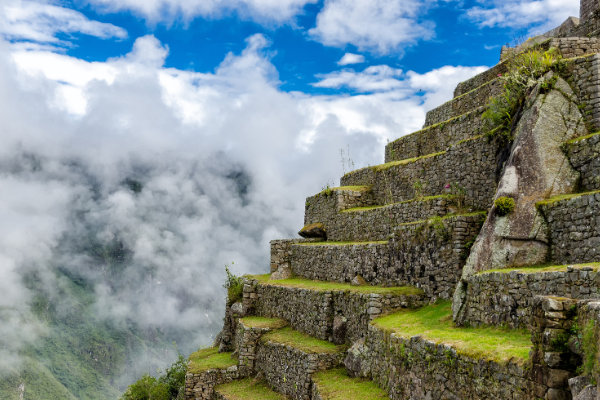
Blank
Blank
Slideshows
Math Resources
Learning Activity:
- Tessellations (Middle and High School)
Sample Problem:
- How big was the Inca Empire? It’s difficult to know exactly, but you could estimate it by finding the areas of these polygons.
Make Your Own Quipu:
- Provide string in different colors for your students to make their own quipu. As a class, determine some small objects in the classroom to count (e.g., pencils, paper clips, rubber bands) and which colors will represent these objects. Also, determine how to represent each number (where to tie the knots, what colors to use, etc.) Give each student a small pile of the objects. Students can count the number of each object in the pile and mark the amount with knots on their quipu. Challenge students to “read” each other’s quipu.
- For older students, you can teach a few more complicated knots, such as a stevedore’s knot and a figure eight knot. See how they can use these different knots to represent place value. For example, if a stevedore’s knot equals 100, a figure eight equals 10 and a single knot equals 1, what does the number 342 look like?
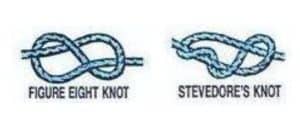
Social Justice Question
Crime almost never happened among the Inca. Punishment was harsh, and even minor criminals lost their lives. If you survived, you were assigned a new job of begging for food while telling passersby about your crime. Do you believe that the deterrent effect of this practice was worth the cost to human life? Why or why not?
Explore Further
- Video about why Machu Picchu was built
- More information about the mathematics of the Inca
- Facts and history about the Inca
Share Your Story
Write your own Global Math Story and send it to us!
Sorry, the comment form is closed at this time.